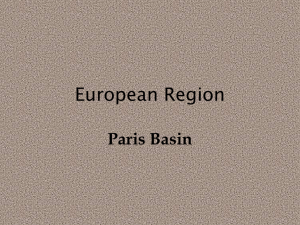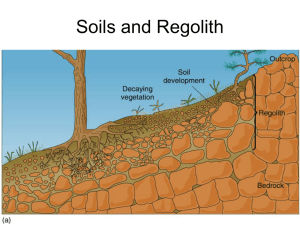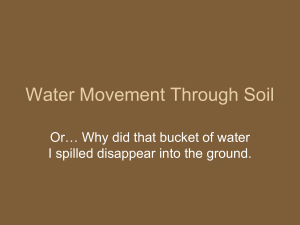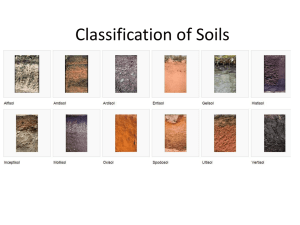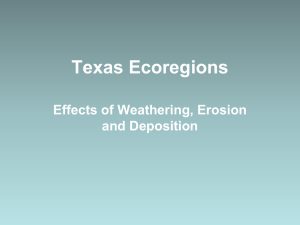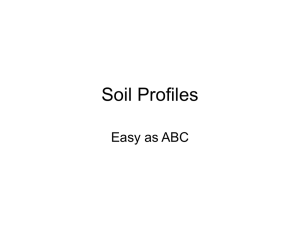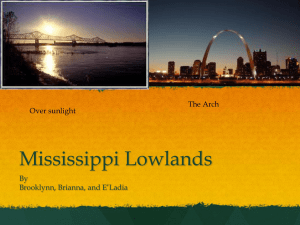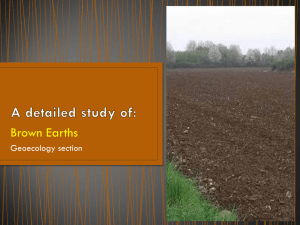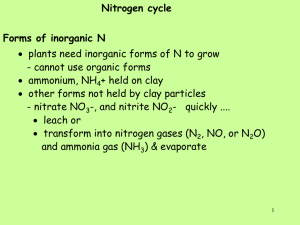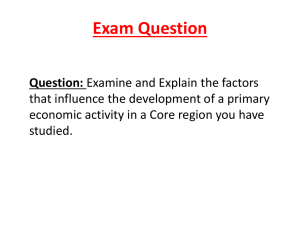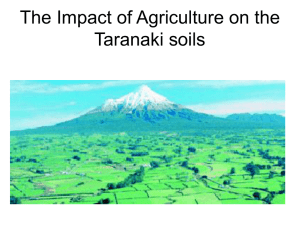The Paris Basin
advertisement
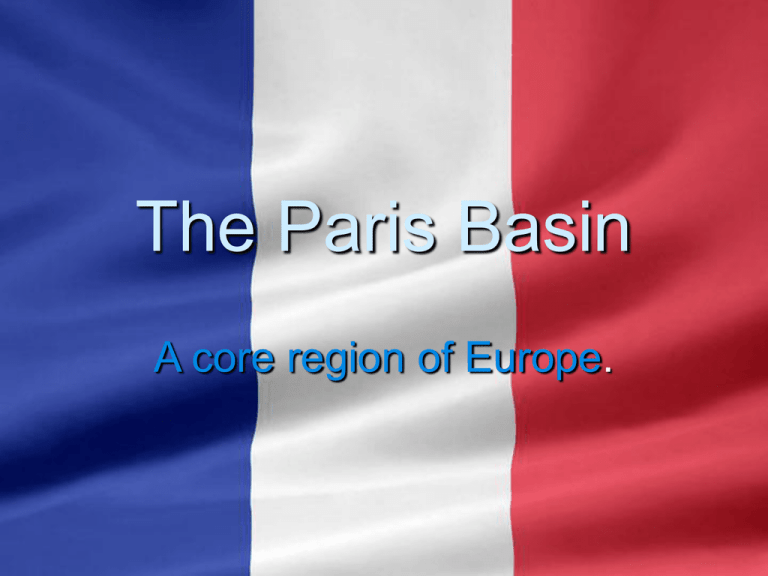
The Paris Basin A core region of Europe. A Core Economic Region of Europe A distinct economic core region because of its geology, soils, agricultural productivity, thriving economy and city of Paris. Many natural and human advantages for settlement and industrial location. (Relief, climate, soils, accessibility, population). Over 20 million people live in the region. A centre of in-migration. Culturally mixed. Largest manufacturing centre in France. Well developed transport network. Centre of government and decision making in France. Physical Characteristics Relief and soils Drainage Climate Relief and Soils Occupies nearly 25% of France. 480km from west to east. 320km from north to south. A huge down-fold (syncline) in sedimentary rocks created over 400 million years ago. (Rocks such as chalks, clays, sandstone, limestone). Rock layers folded so that in the east of the region, the edges of the layers appear as ridges or scarps in the landscape. The biggest scarp is called the Falaise de France. Each rock type (clay, chalk, limestone, sand and gravel) has produced different soils which have influenced the type of farming across the basin. The different farming areas are known as pays in French. In the centre of the basin, very fertile limon soil lies on the sands and gravels (North European Plain). Limon soil – a fertile stoneless soil deposited by wind at the end of the last ice-age and easily worked by machinery; ideal for the growth of cereals. Alluvium – deposited by rivers on their flood plains. Clay soils – ‘heavier’ soils and suitable for dairy farming. This central region is extremely productive and is known as the Ile De France. Most of the area is under 200m in height and is very suitable to agriculture. Well known for its cereal production and is often nicknamed the Granary of France. Varied, fertile soils allow a wide range of farming activities. Drainage 3 rivers flow across the region. The Seine and its tributaries (Yonne, Oise and Marne) flow north-west through Paris and enters the sea at Le Havre. The River Somme flows across the north of the Paris Basin. The River Loire flows west across the southern edge of the region. Climate Changes as you travel from west to east across the region. West – maritime climate (sea influence) keeps summers cool (16 deg) and winters mild (5 deg), average rainfall of 800mm. East of region – continental climate (no sea influence) with hot summers (19 deg) and cold winters (2 deg), less than 700mm of rainfall. Between the two extremes of maritime and continental climatic regions, there is a transitional type climate. The even distribution of rainfall and the long growing season are great advantages for agriculture. Exam Question – Q6A Draw an outline map of a European region – not Ireland – or a continental / subcontinental region. Show and name the following on it: 1 – any two physical features in the region. 2 – any two urban centres in the region. (20 marks) Primary Economic Activities. Influenced 2 by resources such as: Fertile soils Mild climate Low lying relief main topics are: Agriculture Energy Production Agriculture Fertile limon soil and climate have allowed the production of wheat, barley and maize cereal crops throughout the region. Spring and early summer rainfall help crop growth and the long hours of sunshine are ideal for ripening crops. Close to River Seine, alluvial soils also favour intensive farming. Farms are big (over 400 hectares), mechanised and highly productive. Large consumer market – over 21 million people. Farm production in different farming areas (pays) of the Paris Basin Different farming regions have developed based mainly on the soil types of the region. The Ile de France. Low lying, flat region covered with fertile limon soil. Large farms (over 400 hectares) that produce wheat. Yields are the highest in France. Beauce Limestone upland covered in limon soil. Large and mechanised farms. Main wheat producing region. Sugar beet also grown. Brie and Valois In these 2 pays, clay soils occur. This soil produces good pasture land. Farmers here are dairy farmers, famous for cheese (Brie cheese) and butter. Being so close to the urban area of Paris, they also supply fresh milk to the city. The Champagne Region. Clay covered valleys between chalk ridges (scarps). The chalk ridges are infertile, well drained soils. They have a southerly aspect and are suitable for vines. It is here around the town of Reims that the famous champagne wine is produced. These are the most northerly vineyards in Europe and as a result the wines from here have a unique taste. The production of wine is a specialist type of farming called viticulture. Energy Production High energy consumption. Oil and gas are imported through the port of Le Havre where oil refining and petrochemical production form the basis of the economy. Oil and Natural Gas France has small oil reserves at about 150 to 160 million barrels. They are located in the Paris Basin and in the Aquitaine region. France is the 3rd greatest oil-consuming country in Europe after Germany and Russia and 10th greatest in the world. It has to import 95% of its oil needs. The Paris Basin does not contain any gas reserves. Gas is brought by pipeline from gas wells in the Coal Small reserves existed in the south of the region, but in 2004 coal production was phased out completely. France now imports its coal needs. Nuclear Energy France depends heavily on its nuclear generating infrastructure for its electricity supply. 75% of French electricity is generated by nuclear power and its nuclear generating capacity has increased by about 10% over the past decade. 10 of its 37 power stations are located in and around the Paris Basin. Secondary Economic Activities Tertiary Economic Activities. Human Processes.

